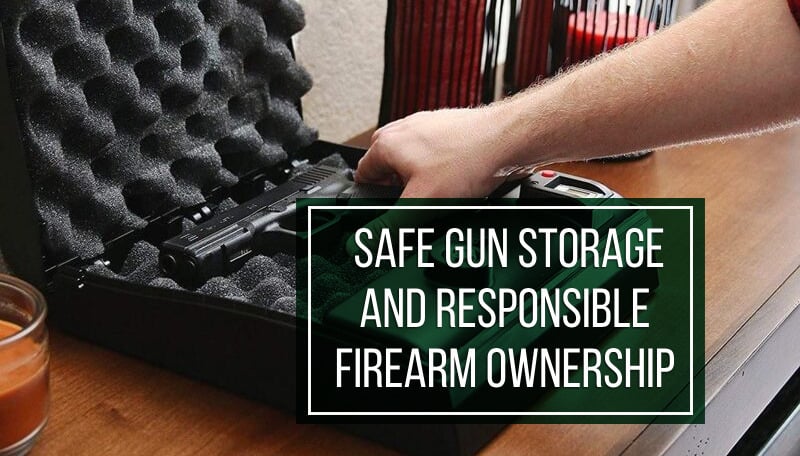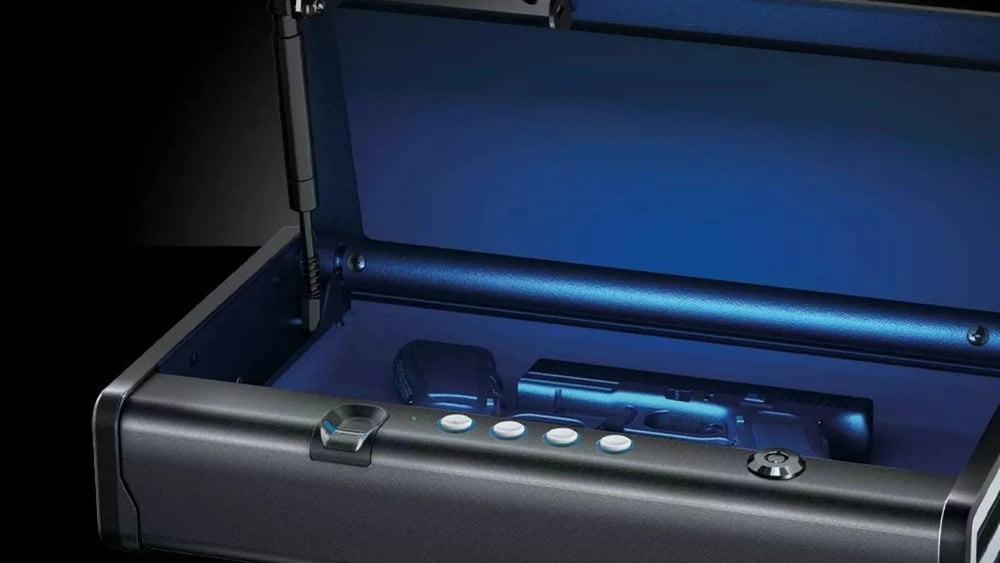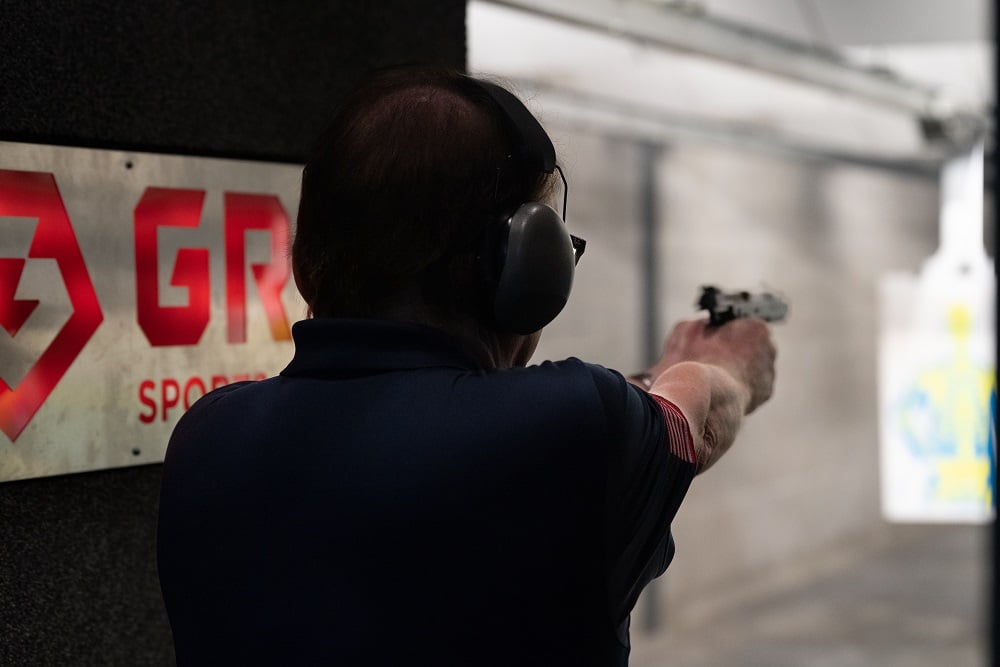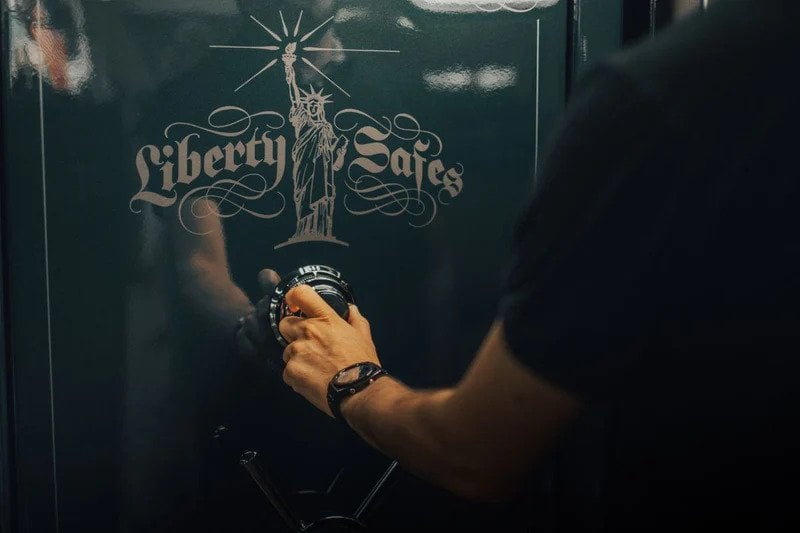
Last Updated on
Nobody said gun ownership was all fun and games. If they did, they lied. However, the understanding of how significant the responsibility is is still not as widely adopted as it should be. In this article, we’ll dive into various aspects of safe gun storage and responsible firearm ownership, emphasizing the importance of proper storage and handling and exploring how gun safes contribute to creating a safer environment for everyone.
Table of Contents
Why Is It Important
Safe Storage Principles
Why Gun Safes are Great
Proper Training Principles
Conclusion
FAQs
The Importance of Responsible Firearm Ownership
There are two aspects of gun ownership. The first one involves enjoying your firearms and having the time of your life with them. The other entails taking the necessary precautions to minimize hazards and risks associated with owning them. Well-balanced, as all things should be. Striking that balance involves acquiring proper training and sticking to the principles of safe gun storage. Being a responsible gun owner means you’re not only protecting yourself and your loved ones but also contributing to a safer society in general. At the same time, failing to do so is a recipe for disaster. If it’s not the dish you are planning to make, stick to the responsible firearm ownership principles.

Safe Storage and Why It Matters
Safe gun storage is something all responsible firearm owners have in common. Implementing proper storage practices can significantly reduce the risks associated with owning a gun, ensuring the safety of the owner, their family and the general public. It’s not as much about being a “good” gun owner rather than keeping everyone safe.
One of the primary concerns of safe gun storage is to prevent children and unauthorized individuals from gaining access to guns. Children are innately curious and may not understand the potential dangers associated with handling firearms. Unauthorized persons, be it a family member without training, a guest or an intruder, should also be prevented from accessing firearms lest anything dire should happen. How to prevent both groups from obtaining your firearm?
Employing Multiple Safeguard Measures
Only by having several lines of defense can a gun owner rest assured the risks of their firearm finding its way into the wrong hands are minimized. One way to do so is to put a gun in a case in a safe in a secret chamber. Not everyone can afford that and luckily, we don’t need to. There are measures easier to implement. They include:
Storing guns separately from ammunition: Keeping firearms and ammunition stored separately ensures that even if an unauthorized person gains access to the firearm, they would still need to locate the ammunition before the firearm could be used. This extra layer of security can buy crucial time for the gun owner to intervene and prevent a potential tragedy.
Using gun locking devices: Gun locks, such as trigger locks or cable locks, provide additional security by rendering firearms inoperable unless the lock is removed. These devices can be used in combination with secure storage options to almost eliminate the risk of unauthorized access or accidental discharge.
Regular checks: Proper inspection of firearms can help identify any potential issues. A family member might not tell they borrowed a gun and return it loaded, for example. Or something managed to breach the defenses and render a firearm inoperable.
Gun Safe Takes the Cake
If you want the most secure and reliable storage means, then a gun safe is just the thing you need. It’s a secure storage solution for firearms, ammunition, and accessories that boasts multiple layers of protection. Here are a few reasons why gun safes make for an excellent storage solution.
Securing firearms from unauthorized access: A primary purpose of a gun safe is to prevent unauthorized individuals, such as children, intruders, and those with ill intentions, from accessing firearms. High-quality safes are equipped with robust locking mechanisms, including combination locks, electronic keypads, or biometric fingerprint scanners, which restrict access to authorized users only.
Protecting firearms against theft: Gun safes are designed to be difficult to break into or remove from a property. They often feature heavy-duty construction, reinforced steel walls, and secure anchoring systems that deter thieves and safeguard contents from being stolen.
Maintaining optimal storage conditions: A well-designed gun safe provides a suitable environment for storing firearms, ensuring their longevity and proper functioning. This includes controlling moisture levels through dehumidifiers, cushioning firearms with padded interiors to prevent scratches, and offering adjustable shelving to accommodate various firearm sizes and shapes.
Providing fire and flood protection: Certain gun safes offer additional protection from fire and flood damage, helping to preserve firearms and other valuable items in the event of a disaster. Fire-resistant safes utilize specialized insulation materials to withstand high temperatures, and waterproof safes employ seals and gaskets to prevent water intrusion.
While saying that every gun safe owner automatically becomes a responsible firearm owner might be overkill, the two notions are certainly connected. Gun safes embody the notion of safety, it’s literally in their name. They are likely to be the most hard-to-break-in pieces of furniture in your house, meaning they will likely become the biggest obstacle on somebody’s way to obtain the firearm. Here’s a detailed guide on Choosing the Best Gun Safe Your Home.
Proper Training: Knowledge is Power
Another key aspect of responsible firearm ownership is obtaining proper training. The basic course into firearm handling not only helps to ensure your safety and the safety of those around you but also enhances your overall experience and enjoyment of gun ownership.
Any well-rounded training program begins with learning about your specific firearm. That includes understanding how the gun operates, familiarizing yourself with its various parts, and getting to know the safety features it offers. Knowing how to open and close the action, load and unload ammunition, and troubleshoot potential issues are all essential skills for any gun owner.

The Four Basic Rules of Safe Gun Handling
Just the way any religion has its sacred writing, responsible firearm ownership rests on four pillars: four basic rules of safe gun handling. These rules serve as the guiding star for every gun owner. Only by practicing them consistently can one minimize the risk of accidents.
Treat every gun as if it’s loaded. Even if you’re confident that a gun is unloaded, always handle it as though it’s loaded. This mindset helps to instill caution and respect for firearms, reducing the likelihood of complacency and accidents.
Never point the muzzle at anything you’re not willing to destroy. Be conscious of where your gun is pointing at all times, and ensure that the muzzle is always directed in a safe direction. By following this rule, you can prevent accidental discharges from causing harm or damage.
Keep your finger off the trigger until you’re ready to shoot. Your finger should rest alongside the frame of the gun, away from the trigger, until you’ve made the decision to fire. This practice helps to prevent unintentional discharges caused by sudden movements or external forces acting on the firearm.
Be sure of your target and what’s beyond it. Before firing, confirm that your target is indeed what you intend to shoot and be aware of what lies behind it. Bullets can travel great distances and penetrate various materials, so it’s crucial to consider the potential risks and consequences of each shot.
By dedicating time and effort to proper training, gun owners can develop the skills and knowledge necessary to handle firearms safely and responsibly. However, knowing how to handle firearms is only half the deal. Many gun-related accidents happen because people who were not supposed to gain access to a firearm managed to procure it. Preventing home accidents involving guns is a very doable thing: safe storage is the best remedy.

Concluding Words
Of course, there is more to responsible gun ownership than that. Staying informed about local laws and regulations, practicing regular maintenance and cleaning of your guns, promoting firearm safety within your community – the list goes on and on. However, even if you only embrace these two principles, you’ll be well on your way to exemplifying responsible gun ownership and fostering a safer environment for people around.
Here’re some other articles on gun safes:
FAQs
What safety measures should be taken when storing firearms?
- Use a high-quality gun safe with a UL-listed lock to protect your firearms from unauthorized access and potential damage.
- Store ammunition separately from the firearms in a cool, dry, and secure location.
- Ensure your storage area has consistent low humidity levels and is away from direct sunlight or heat sources.
- Choose a fire-resistant safe and store your firearms away from flammable materials and potential fire hazards.
- Periodically inspect and clean your firearms to ensure they remain in good condition while in storage.
Are there any best practices for teaching children about gun safety?
Sure thing! If you have children and own firearms, the two are likely to meet sooner or later, so it’s better to have your child prepared and educated rather than oblivious. Here are some tips:
- Start early: Begin discussing gun safety with your children as soon as they’re old enough to understand basic safety concepts.
- Set clear rules: Establish clear rules regarding firearms, such as not touching a gun without adult supervision and never pointing it at anyone, even if it’s unloaded.
- Use age-appropriate language: Explain the dangers of firearms in simple terms that children can easily grasp, using relatable examples or analogies.
- Educate on the difference between real guns and toys: Teach children to distinguish between real firearms and toy guns, emphasizing that real guns can cause serious harm or death.
- Lead by example: Demonstrate responsible firearm handling and storage practices, reinforcing the importance of safety precautions.
What are the risks associated with irresponsible firearm ownership?
The consequences of neglectful gun ownership are dire and numerous. Nobody knows how every specific situation will unfold, but here’re the things that happened because of the owner’s absent-mindedness: accidental discharge, child access, theft, increased escalation risks in domestic conflicts and suicide attempts.




Leave a Reply